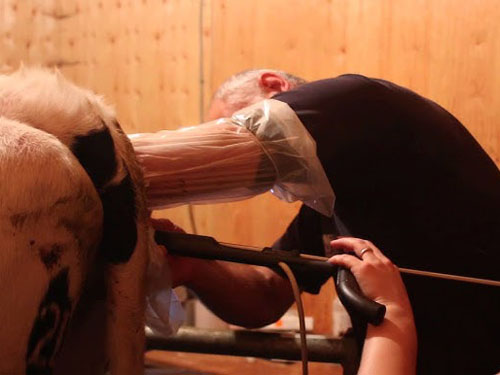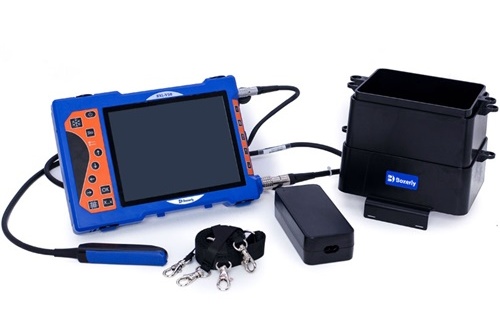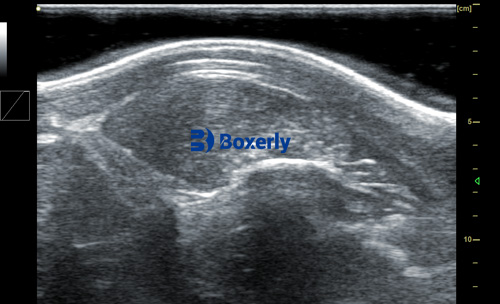In the world of animal rescue, every second matters. From stabilizing an injured stray to diagnosing a neglected senior pet, the ability to make swift, informed decisions often determines whether an animal survives or succumbs. Yet, many rescue facilities still rely heavily on external veterinary clinics for diagnostic imaging, losing precious time in the process. As rescue centers globally are beginning to recognize, having on-site digital veterinary ultrasound is no longer a luxury—it’s an essential tool in modern animal welfare operations.

This article explores how on-site ultrasound equipment is transforming animal rescue, from faster diagnosis to cost-effective care, based on international understanding, global trends, and the daily realities faced by veterinarians and caregivers in the field.
The Urgency of Rescue Medicine: Why Speed Saves Lives
Across the U.S., Europa, and beyond, rescue shelters are often overwhelmed with animals in distress—those hit by cars, abandoned in poor health, or suffering from long-term neglect. In these cases, rapid diagnosis is not optional. Foreign rescue professionals often echo a shared sentiment: “We cannot treat what we cannot see.” Ultrasound, being a non-invasive, portátil, real-time imaging method, answers this call perfectly.
Take the example of a rescue center in Berlin, Alemania. A senior cat arrives in respiratory distress. Without on-site imaging, the team must transport her to an outside facility, endure long waits, and then decide a course of action—often too late. Sin embargo, centers equipped with in-house ultrasound have a different story: the cat is scanned within minutes, fluid is found in the chest cavity, and emergency treatment begins immediately. Her life is saved—not days later, but right then and there.
Digital Veterinary Ultrasound: A Global Standard of Care
Globally, digital veterinary ultrasound has become the preferred imaging tool in rescue facilities for several key reasons:
-
Portabilidad: Handheld or laptop-style ultrasound units can be brought directly to the animal, even if it can’t be moved.
-
Speed: Images are produced in real-time, allowing near-instant diagnosis.
-
Safety: Unlike X-rays, there’s no radiation exposure, and no need for a dedicated room.
-
Versatilidad: Whether checking for internal bleeding, embarazo, Tumores, or infections, ultrasound offers a wide range of diagnostic applications.
Countries like Canada, the UK, and Australia have already begun incorporating ultrasound into rescue training programs, teaching shelter staff and veterinarians to recognize internal issues such as fluid accumulation, Infecciones uterinas, bladder stones, or heart enlargement—all with a simple scan.
Faster Answers, Better Outcomes
Let’s picture a typical scenario in a U.S. non-profit rescue. An emaciated dog arrives with labored breathing. Without on-site tools, staff must drive him across town, wait for imaging results, and return—losing hours. In critical cases, that delay could mean the difference between life and death.
Now, imagine that same facility is equipped with a digital veterinary ultrasound. The scan reveals pneumonia; treatment begins immediately. The outcome shifts from uncertain to hopeful. This isn’t theory—it’s the daily reality in rescue centers using machines like portátil, waterproof ultrasound scanners specifically designed for animal use.
International rescue experts report similar findings:
-
In Spain, early detection of internal bleeding in street dogs has reduced mortality.
-
In Thailand, ultrasound helps identify pyometra (uterine infection) in street cats quickly, enabling emergency surgery.
-
In the Netherlands, shelters use ultrasound for pregnancy confirmation in feral cats, helping manage population growth through better spay/neuter timing.

Efficiency Beyond Medicine: Staff, Time, and Cost Savings
In-house ultrasound not only improves medical outcomes but also has significant operational and financial benefits.
1. Reduced Transport and Outsourcing Costs
In countries like Australia, where many rescues are in rural areas, transporting animals for diagnostics can take hours and cost hundreds. On-site scanning eliminates this burden, reducing fuel costs, vehicle wear, and animal stress.
2. Improved Staff Efficiency
By avoiding back-and-forth trips to clinics, staff can spend more time caring for animals on-site. This translates to better use of volunteer time y less burnout, a major issue in global rescue work.
3. Revenue Generation Potential
Some rescue facilities in the UK and U.S. have found new revenue streams by offering low-cost ultrasound scans to other shelters or public clients. These services help offset the cost of equipment, often turning the investment into a self-sustaining model.
Digital Ultrasound and Disease Control
One of the most underrated benefits of on-site ultrasound is rapid infectious disease detection.
-
Early identification of pneumonia, which is common in shelter puppies, reduces the risk of kennel-wide outbreaks.
-
Heartworm detection, particularly in rescued dogs from warm climates like Florida or southern Europe, helps avoid post-adoption complications.
-
Detection of uterine infections or fetal distress allows shelters to intervene early, even performing cesarean sections when necessary.
In every case, real-time imaging prevents suffering and enhances recovery outcomes.

Elevating the Standard of Rescue Medicine
Many rescue veterinarians worldwide describe ultrasound as a game-changer. Not because it replaces X-rays or bloodwork, but because it enables quicker triage and decision-making.
Whether assessing an abdominal mass in an aging Labrador, or checking for intestinal blockages in a vomiting kitten, ultrasonido takes the guesswork out. In highly emotional environments like rescue, where caregivers must make rapid decisions under pressure, having that clarity can save both animal lives and human morale.
Facilities using tools such as the BXL-V50 veterinary ultrasound scanner report smoother workflows, improved diagnostics, and higher adoption rates due to faster recoveries.
Making the Transition: Funding and Implementation
One challenge for rescues is the initial cost. Sin embargo, rescue facilities around the world have found creative solutions:
-
Grants from animal welfare organizations (p ej., PetSmart Charities in the U.S., Dogs Trust in the UK).
-
Donor-sponsored purchases, particularly when tied to a clear animal welfare improvement plan.
-
Vendor financing, allowing monthly installments instead of upfront lump sums.
International providers are also offering rescue-specific packages—bundling training, maintenance, and support—to make the technology more accessible.
Choosing the Right Equipment
When selecting a veterinary ultrasound, rescue facilities should prioritize:
-
Portabilidad (lightweight and battery-powered)
-
Durabilidad (waterproof and shock-resistant for tough environments)
-
Imaging Versatility (support for abdominal, cardiaco, reproductivo, and musculoskeletal scans)
-
Ease of use, especially when multiple users need to operate the system
Por ejemplo, el BXL-V50 fits these needs perfectly, with an 8-inch HD display, long battery life, waterproof casing, and intuitive controls that allow even first-time users to get accurate readings quickly.

BXL-V50 Portable ultrasound machine
A Global Mission: Giving Every Animal a Fighting Chance
Whether you’re operating a rescue in rural Texas, coastal Portugal, or the outskirts of Kuala Lumpur, el mission is the same: save lives, reduce suffering, and give animals a second chance. On-site veterinary ultrasound supports that mission by making faster, more compassionate care possible.
It’s not just about having another machine in the clinic. It’s about seeing what’s wrong without delay. It’s about avoiding unnecessary transport and pain. It’s about treating animals like the lives they are—not just the numbers they become in overburdened systems.
En el futuro, digital ultrasound will likely become a standard fixture in rescue medicine—just as it is today in human emergency rooms. By investing in this technology, rescue facilities not only raise their standard of care but also embody the very values of speed, compassion, and responsibility that define the animal welfare movement.
Conclusión
The rescue field continues to evolve, guided by innovation, compassion, and the urgency of its mission. Digital veterinary ultrasound has emerged as one of the most powerful tools in this journey—enabling real-time diagnosis, cost-effective treatment, y better outcomes for animals who need help the most.

By making this technology part of their everyday operations, rescue facilities around the world are not just improving care—they are redefining what’s possible for animals in crisis.
References:
-
Whitaker, D. A., & Smith, E. (2021). Veterinary Ultrasonography in Food-Producing and Companion Animals. Journal of Veterinary Imaging.
-
American Humane Association. (2023). “Why In-House Veterinary Diagnostics Save Shelter Lives.” https://www.americanhumane.org
-
Beef Cattle Institute. (2023). “Use of Ultrasound for Growth Evaluation in Cattle.” https://www.beefcattleinstitute.org/ultrasound-growth
-
International Fund for Animal Welfare. (2022). “Medical Protocols in Animal Rescue Operations.” https://www.ifaw.org
-
PetSmart Charities. “Grant Opportunities for On-Site Veterinary Equipment.” https://www.petsmartcharities.org/grants